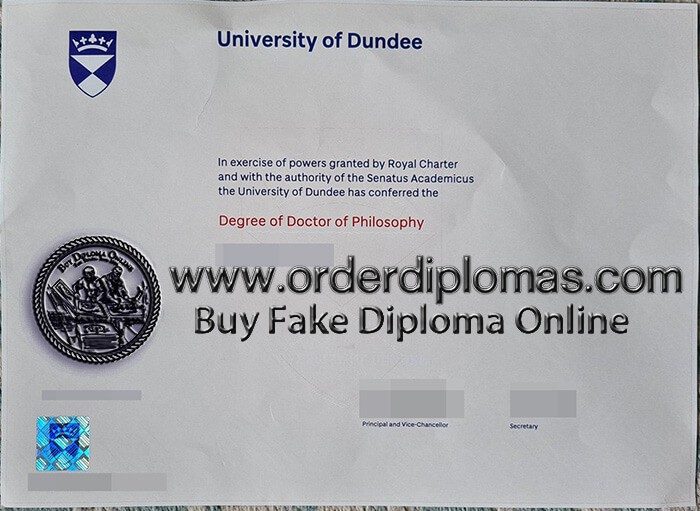
buy fake University of Dundee degree
How much does it cost to buy a University of Dundee diploma? buy fake University of Dundee diploma, buy fake University of Dundee degree, buy fake University of Dundee certificate, buy fake University of Dundee degree certificate, make fake University of Dundee diploma, buy fake diploma, buy fake degree, buy fake certificate, order fake diploma.
The University of Dundee is a public research university based in Dundee, Scotland. It was founded as a university college in 1881 with a donation from the prominent Baxter family of textile manufacturers. The institution was, for most of its early existence, a constituent college of the University of St Andrews alongside United College and St Mary’s College located in the town of St Andrews itself. Following significant expansion, the University of Dundee gained independent university status by royal charter in 1967 while its retaining elements of governance structure.
The main campus of the university is located in Dundee’s West End, which contains many of the university’s teaching and research facilities; the Duncan of Jordanstone College of Art and Design, Dundee Law School and the Dundee Dental Hospital and School. The university has additional facilities at Ninewells Hospital, containing its school of medicine; Perth Royal Infirmary, which houses a clinical research centre; and in Kirkcaldy, Fife, containing part of its school of nursing and health sciences. The annual income of the institution for 2020–21 was £ 275.7 million of which £73.9 million was from research grants and contracts, with an expenditure of £269.0 million.
The publication of the Robbins Report on Higher Education in 1963, which considered the question of university education expansion throughout the country, provided impetus to the movement to attain independent university status for Dundee. At this time, a number of new institutions were to being elevated this status, such as the University of Stirling, and second universities were created in Edinburgh and Glasgow (Heriot-Watt University and the University of Strathclyde) despite their having fewer than 2,000 students.
Queen’s College’s size and location, alongside a willingness to expand, led to an eventual decision to separate from the wider University of which it remained an integral part. In 1966, St Andrews University Court and the Council of Queen’s College submitted a joint petition to the Privy Council seeking the grant of a Royal Charter to establish the University of Dundee. This petition was approved and the Charter was granted which saw Queen’s College become the University of Dundee, on 1 August 1967. The university continued a number of the traditions of its originator college and university and continues to be organized under the ancient university governance structure.
City Campus
College Green, featuring the Old Medical School and the Carnelley Building.
The main campus is within the West End of the City of Dundee. It has expanded greatly since the university gained independence, from just four converted buildings when the University College was founded in 1881 the university has grown to consist of over fifty at present. However, many buildings survive from Dundee’s period as a university college and as a constituent college of St Andrews University. The earliest purpose-built facility on campus was the Carnelley Building which opened in 1883 as part of the new 33 University College. A £10,000 donation from Miss Mary Ann Baxter provided for a chemistry laboratory situated in the building which was named for the university’s first professor of chemistry, Thomas Carnelley.
Geddes Quadrangle
The buildings at the heart of the university form the Geddes Quadrangle. These include the Carnegie, Harris and Peters Buildings which were constructed in 1909 as part of the new college of the University of St Andrews. The Geddes Quadrangle was named for Patrick Geddes, a pioneering thinker in the fields of sociology and urban planning and former professor of botany at Dundee, as a botanist Geddes had originally proposed a garden in the center of the quadrangle to be used for teaching purposes. The designer was Victorian architect Robert Rowan and Anderson, the architect of buildings such as the Scottish National Portrait Gallery and Mount Stuart House.

 USA Diplomas
USA Diplomas Canada Diplomas
Canada Diplomas UK Diplomas
UK Diplomas Australia Diplomas
Australia Diplomas Germany Diplomas
Germany Diplomas Malaysia Diplomas
Malaysia Diplomas Singapore Diplomas
Singapore Diplomas Other countries
Other countries Transcript-Form.xlsx
Transcript-Form.xlsx
